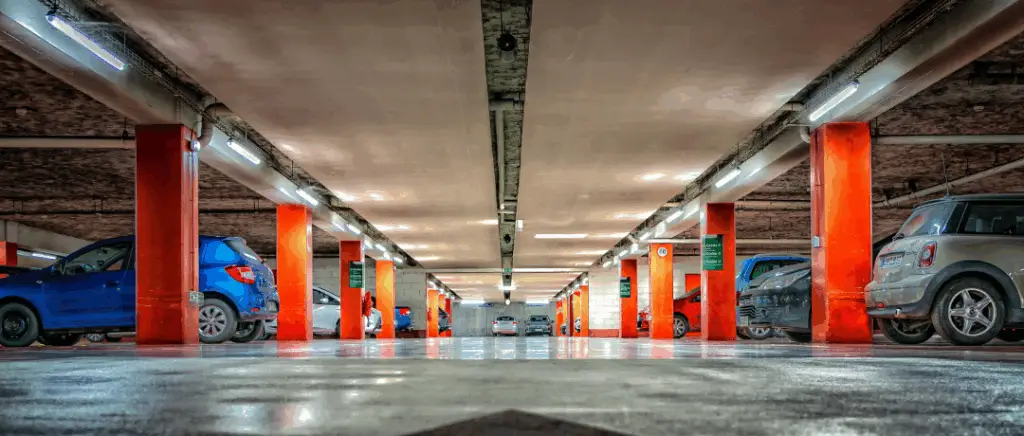Monday to Friday, 9am to 12.30pm and 2pm to 7pm
Preparing your electric car before setting off
Check tyre pressure and winter equipment
In winter, the outside temperature can cause tyre pressure to drop, affecting not only safety but also the environment.autonomy of your electric car. Under-inflated tyres increase rolling resistance, which decreases fuel efficiency and reduces the car's range. battery of around 3 %. So it's essential to check your tyre pressure regularly with a car air pump before each trip, especially on long journeys.
Advice : Consult your vehicle manual for the recommended pressure and adjust it accordingly as the temperature fluctuates.
Winter tyres, specifically designed for electric vehicles, improve grip on slippery roads while limiting the impact on range. These tyres are optimised to offer better fuel efficiency while guaranteeing safety on snow and ice. They are particularly recommended for long winter journeys where weather conditions can be unpredictable.
As well as the right tyres, make sure you have the essential equipment in your car: an ice scraper, a survival blanket and snow chains. This equipment can be crucial in extreme weather conditions, when winter tyres alone may not be enough.
Tip: Don't forget to take along a car thermometer to keep an eye on the temperature in the passenger compartment and adjust the heating as required, without draining the battery unnecessarily.
Plan your route and recharge stops
When you're planning a long winter journey with an electric car, planning your charging stops is crucial. Low temperatures can reduce battery life by 20 % to 30 %. So it's vital to plan regular stops at fast-charging stations to avoid any nasty surprises. Applications such as ChargeHub, PlugShare and Google Maps make it easy to locate the charging stations available on your route and check their status in real time.
| Description | Fonctionnalités | + | - | |
|---|---|---|---|---|
|
ChargeHub
|
Dedicated to locating charging stations
|
- Map of charging points
- Filtering by connector type
- Route planning
- Recharge history
|
- Detailed information on the terminals
- Compatible with several charging networks
- Active feedback community
- Recharging history
|
- Fewer terminals listed in certain rural areas
- Less intuitive interface for new users
|
|
PlugShare
|
Finding and sharing charging points
|
- Real-time mapping of terminals
- User reviews and photos
- Availability notifications
- Route planning with stops
|
- Very large global database
- Real-time information on terminal availability
- Contributions and opinions from the community
|
- Some terminals may not be up to date in less frequented areas
- May require a stable internet connection
|
|
Google Maps
|
General navigation including charging points
|
- Integrating terminals into itineraries
- Satellite view and Street View to easily find kiosks
- Real-time availability for certain networks
|
- Intuitive and familiar interface
- Worldwide availability
- Suggested interesting stops nearby
|
- Fewer details on terminal specifications (connector types, speed)
- Fewer community reviews of terminals
|
Opt for DC fast chargers to make the most of your time, especially on long journeys.
Prepare a winter emergency kit
A good winter emergency kit should include basic items such as :
- thermal blanketsto keep you warm without using up battery power
- ice scrapers and brushesto maintain clear visibility on the road in the event of snow or ice
- torch and batteriesIf you have to leave your car or carry out minor repairs in the dark.
Although electric cars have fewer mechanical parts than combustion vehicles, they are not immune to breakdowns. We recommend that you always carry an extra cable, in case of a power cut or charging station failure. In winter, the likelihood of a puncture increases due to slippery conditions. A repair kit will enable you to get back on the road quickly while waiting for a breakdown service.
Finally, if you get stuck on a snow-covered road or have to wait a long time in isolated areas, it's wise to pack non-perishable snacks and water. It may sound simple, but staying hydrated and nourished is crucial when waiting for long periods in the cold.
Also read → Go on holiday in an electric car: our advice
Optimising the electric car's range in winter
Heating and comfort without consuming too much
Traditional heating, which relies on the battery, can consume a large amount of energy and significantly reduce your vehicle's range. To minimise this impact, use car preconditioning before setting off, a feature available on most electric vehicles. By warming up the passenger compartment while the vehicle is still plugged in, you avoid using up the battery's energy during the journey.
Kinetic heaters and rechargeable battery heaters are also excellent alternatives for maintaining optimum comfort without straining the main battery. These devices are specially designed to be energy-efficient and can extend your vehicle's range in winter.
Efficient use of energy regeneration systems
What is regenerative braking ?
Regenerative braking is a powerful tool for maximising the range of your electric car, especially in winter, when energy management is crucial. This system recovers the kinetic energy generated during braking and converts it into electricity to recharge the battery.
Anticipate and brake gradually
To take full advantage of this system, drive gently. Anticipating stops and slowing down gradually allows the system to recover more energy, improving the overall range of the battery.
Adjust regeneration settings
Some electric vehicles allow you to adjust the regenerative braking intensity. In winter, increasing this intensity can help you regenerate more energy during descents or deceleration phases.
Also read → Electric car range: 6 winter tips
Driving tips for winter journeys
Adapt your driving style to the conditions
Accelerate and brake gradually to avoid excessive energy consumption and maximise the use of regenerative braking. By avoiding sudden acceleration, you reduce the strain on the battery and improve traction on slippery roads. Use the appropriate driving modes, such as 'eco' or 'snow', to adjust the vehicle's performance to the climatic conditions. These modes reduce power output and limit energy consumption to extend range.
Allow for longer recharge times
To avoid frustration, be prepared for longer stops at charging points, especially if you're travelling long distances. Cold batteries accept energy less well, and rapid recharges can be significantly slower below 0°C. Anticipate these delays by planning stops in places where you can enjoy amenities, such as cafés or shopping centres, while your car is recharging.
Checklist before hitting the road
- Check tyre pressure
- Fully charge the battery
- Check the windscreen washer fluid
- Clean and clear sensors and cameras
- Check the heating system
- Test the headlights and rear lights
- Preheat the car before setting off
- Store a mobile phone charger
- Check coolant levels
Also read → Reducing the energy consumption of an electric car: 8 tips
Conclusion
Preparing your electric car for long winter journeys therefore requires careful attention to planning, equipment and energy management. By adopting intelligent strategies such as pre-conditioning the battery, making effective use of regenerative braking, and rigorously checking the condition of your vehicle, you can maximise the range and safety of your journey. By anticipating weather conditions and equipping your car with the right emergency kit, you'll be ready to face winter with peace of mind.
































